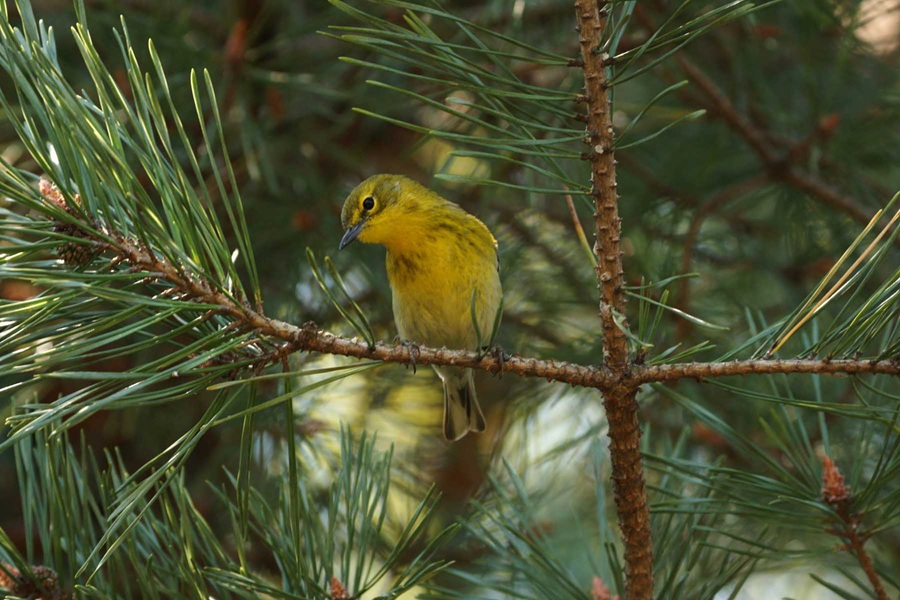The heat was getting unbearable. I tried to visualize the cold water that I would soon be plunging into, but all around the air was baking and even the breeze was hot. My mind filled up with the stretch of fire-like sand still ahead, a great wall standing between the shade of the forest and Cape Cod Bay.
I breathed in through my nostrils and felt the burning air close to my brain. And in that was a thick scent: pine oil. I took another deep inhalation through my nose. It helped calm my nervous system. Then the sound came: the rising trill from above. It was one note, but as it increased in volume, it rattled my baked brain. Slowly, I looked up toward the source.
A flitting dark-winged shape moved in the treetops out to a promontory of a pine branch, and there the bird sat in full light, lifting its bill to the sky and releasing its mellifluous song. All else held still in this midday mid-August heat. The call rose again, its force seemingly lifting the dust from the road up into the treetops. I stopped. It called again.
We were connected now; the pine warbler and I, each aware, communing. Perhaps it was telling me not to lose faith in life. Perhaps I was showing it I wasn’t a threat but a companion.

Birds don’t sweat, but they do pant in heat. They open their bills and raise their tongues to allow heat to dissipate, and breathing rapidly, they push hot air from their lungs. This warbler in song wasn’t overheating the way I felt I was. But I have seen birds suffering in dry hot climates. They pant, they seek out drinking water, and they push their feathers down close to their skin and often raise their wings slightly to increase venting.
Birds have colonized all the continents, so they have much to teach us about living in harmony with the various habitats and climates around the world. Despite being of the reptile clade, their warm-bloodedness is to us less snake-like and more mammalian. Almost any small chick draws oohs, but a baby crocodile? Not so much.
Pine warblers (Setophaga pinus) love Cape Cod. We do have lots of pitch pine (Pinus rigida). Whatever we think of our forest’s evolution, we know one thing for sure: without our National Seashore these pine cloaked hills would be a bric-a-brac of suburban sprawl. And this species of wood warbler nests exclusively in pine trees.
Females build the nests, using spider webs to thread grass, bark, and pine needles together. Three to five eggs are laid, incubation time is short, just 10 days, and the males help with feeding. These birds are often repeat nesters, and that appears to be part of the reason their populations are stable and maybe even increasing. Migration is thought to be largely from southern Florida, though some individuals travel across the Caribbean in winter months.
Recently, genetic research identified many of our North American wood warblers to be merged from Dendroica (from Greek meaning of “tree” and “house”) into Setophaga, meaning “moth eater,” of which the American redstart was the lone species (S. ruticilla). Now, many familiar warblers that migrate through the Outer Cape fall within the genus Setophaga, including the Cape May warbler.
This genus tends towards curious. “Pishing” as one walks can get a male to come and defend his territory, bringing close-up views of the bird. They are often seen walking and do come to feeders, unlike most wood warblers. It is a dull olive yellow above, with two white wing bars and a buffy belly. Its slender dark bill is perfect for gleaning invertebrates and long enough to pull out pinecone seeds, a less common snack.
It was time to get to the water — I had been given the strength to push on, thanks to this fellow. I listened to his song for as long as I could until the surf drowned it out.



